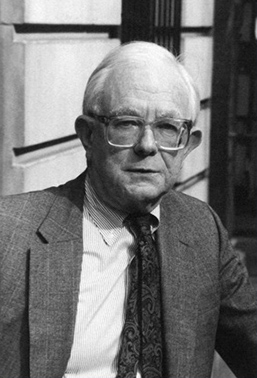
With the storm of World War II on the horizon, the Kallir family moved to America from Austria in 1939, bringing with them their teenage son, John. Their home had been Vienna, where John had been born in 1923 and received his primary school education. He began college in New York, but the war took him into the Army and its medical corps, where he was in charge of a hospital’s clinical laboratory. After discharge, he received a BS in chemistry from Manhattan College in 1946, and an MA in modern history from Columbia University in 1949. This background in science and social studies would influence his perspective in the years to come.
Putting his science education to work, he had become a part-time editor of an abstract bulletin for E.R. Squibb while in graduate school. From there, he moved into medical advertising, joining Paul Klemtner & Company in 1949. Klemtner’s offices were in Newark and the business then was for small Midwestern Rx accounts. John’s eyes were on Manhattan and the Pfizer account at William Douglas McAdams, where increased promotional spending and a new creative style were changing the face of medical advertising.
He went to McAdams in 1951 and for the next 10 years was at the center of the transformation in pharmaceutical promotion. He began on Pfizer, was transferred to the demanding Warner Chilcott account where he was instrumental in the success of the cardiovascular product, Peritrate, and, finally, became responsible for all the creative work for Roche. His copy for Librium, including the tagline “The successor to the tranquilizers” helped launch the first benzodiazapine and propel the brand to unprecedented sales levels.
At agencies like McAdams, L.W. Frohlich, and Sudler & Hennessey, the catalogue look of pharmaceutical advertising of the 1940s was being abandoned for contemporary graphic design and emotionally charged copy. An influx of dollars from the highly profitable “wonder drugs” of the period fueled a promotional boom. Sales forces were small, and, accordingly, journal advertising and direct mail were fields of intense competition with agency creativity a key ingredient for marketing success. Kallir was the creative director on the largest account at the largest medical advertising agency. He was center stage and an important player in what has been called the industry’s “Golden Age.” Then in 1961, seeing the opportunity that existed for new advertising agencies, he left McAdams and struck out on his own. In 1962, Warren Ross and Jerry Philips joined him and Kallir Philips Ross was born.
The agency grew to become one of the leaders in medical advertising, at one time ranking as the largest Rx agency in the US. KPR built its business through unusually long-term relationships with such clients as Upjohn, Ortho, McNeil, Merck, Janssen, and Johnson & Johnson.
Pharmaceutical advertising was originally called “ethical drug” advertising. Although the term is out of use, it is particularly appropriate to the career of John Kallir, for he brought to the business a profound sense of the responsibility carried by promotional programs on healthcare products. Kallir’s honesty and integrity strongly influenced the standards of the field. His clients and employees put absolute trust in John’s work, his judgment, and his commitment to them.
This, together with his gracious manner and the breadth of his cultured erudition, made him an outstanding representative of the best in our business. KPR was sold to Doyle Dane Bernbach in 1983, eventually becoming part of Omnicom. Kallir retired in 1993.